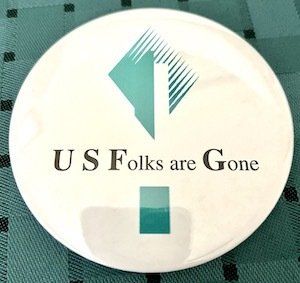My Mind-Blowing Failure That Forever Changed How I Lead
A couple of months into a management job early in my leadership journey, I experienced a near career-derailing failure.
At 27-years old, I inherited a department of seasoned professionals in a field where I had no expertise. Yes, they were all older than me too.
All indications showed this department needed an about-face. Things looked bleak. Clients were unhappy, and critical performance measures were terrible. The internal resistance towards changing their status quo appeared insurmountable.
After speaking with the department supervisors and several employees, I thought I knew how to make that 180-degree change our department needed.
I gathered all of the employees and shared my change program. I saw eye rolls, crossed arms, heads shaking, and grumbles. Pushing my approach to the brink of ugly, I repeated the plan, saw we were going nowhere. I then said, “We have to make these changes. If you don’t like it, too bad so sad, it’s going to happen.” (Imagine the mushroom cloud rising from the room.)
That experience helped me discover critical changes that helped me get back on track and move from a manager to an influential leader.
What is an Influential Leader?
A person who consistently demonstrates skill engaging others’ hearts and minds while creating behavior change without the means of position or authority.
Too bad, so sad I had such a long way to go with my rough start.
Powerful Change Leadership Requires Influence Skills
The leader that uses their title or their position to create change will never produce sustainable results.
While I went through the motions of gathering ideas, I missed the point of connecting with the hearts and minds of people in my new department.
Using the power of my position to try to generate change was a big mistake. No way were they going to change without first connecting.
I also missed how my communication style might come across negatively to the department. Recognizing your communication style and adjusting your approach to others helps create an initial connection.
(Click here to learn more about your communication style.)
A study reported in 2013 Aug-Sept HBR showed that initially putting forward an impression of competence or self-determination undermines influence.
Instead, when we first show high levels of warmth followed by moderate competency, we win active engagement and connection.
What Did I Do After That Meeting?
First, I apologized. We would not have another meeting like that ugly department meeting. Next, I shared my plan on how I would listen more, and together we would figure out how to better serve our clients. It would be a team effort.
I stepped back so that we could take steps forward together.
Opposition is a Gift to Change Leaders
The people who show the most opposition to change give you an invaluable gift. They show where the vulnerabilities lay. When you sincerely ask for their point of view, they will share it.
As opposers lay-out what is wrong with a potential change, the deft leader transforms the conversation into a co-creative experience.
This co-creative conversation converts opposers into allies.
When circling back to the most apparent opposers in that never-to-be-repeated meeting, I found that the biggest complainers cared the most about their work. They were a fountain of relevant ideas.
When asked to identify the easiest and most significant changes to make – they delivered. They were excited to present their expert solutions to the department. Their insight and expertise lead to change.
Not all opposers become your ally. However, they will show you the vulnerabilities not yet recognized – it’s a gift.
How Can My Mistakes Help You?
The mistakes we make as leaders are opportunities. An early-career mistake I made helped me course correct and transform from a manager into a leader.
What were some of the lessons I learned?
- Leading is more than achieving results – it’s about connecting with hearts and minds, so people want to make a change.
- When we lead with influence rather than title or position, we create a sustainable change momentum.
- Opposers give you precious gifts. Embrace opposition.
- Being an influential leader is an adventurous process. Enjoy the ride!
To learn more about influential leadership and how to develop your leadership skills, contact us at info@kmleadership.com.









